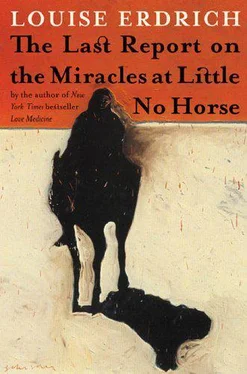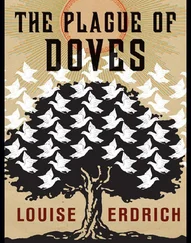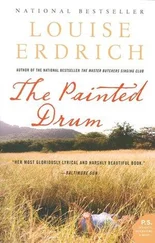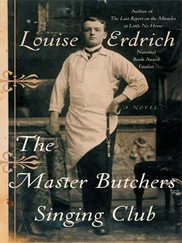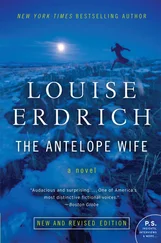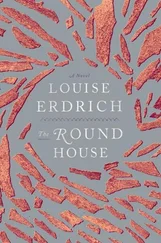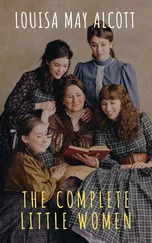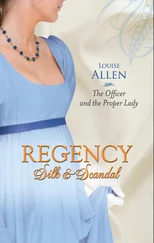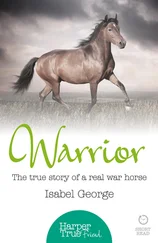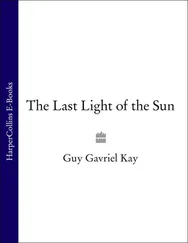Father Damien winced, then answered himself.
“Not unless her task was to be a holy aversion, a trial, a scourge. I used to call her my hair shirt. Her very existence was an itch. Many a time I pitied her, but Father Jude, I was hard pressed not to hate her as well.”
Jude nodded, made a few notes. “Can you think of instances in which she exhibited a sacramental kindness?”
“No.”
“Come now, even Satan gives alms on occasion.”
“When it is to his advantage. That was the nature of Leopolda’s kindness. I consider that a spurious kindness.”
“Please think,” Jude said in a penetrating tone, for he really had to know whether there was something, anything, she’d done. The light fell golden and raw now, through the moving screen of twigs.
Father Damien thought, and then an odd, sad smile crossed his face.
“Quill,” he said at last. “Quill. Yes. Leopolda was the one who cured Quill’s madness. Sadly, of course, Quill died of the cure.”
“Oh, of course,” Father Jude muttered, throwing down the pen. “Died of the cure!”
“But she was sane when she died, completely clear minded!”
Father Jude picked up his pen again, tapped it on his cheek. “I wish there were one, just one thing that Leopolda did that was not of an ambiguous nature!”
“But that is just exactly what the Puyats are,” said Damien, “not one thing or the other. Contradictory. I told you that you must look at the name and the clan to assess the person, even a mixed blood like Leopolda. For she was shaped by the double nature of her mother, and who knows what else!”
Damien sighed mightily and attempted to gather his energy, puffing slowly until he straightened his chair. “Now that was how Nanapush began their history,” he went on, “I should tell you he was not entirely to be trusted where the Puyats were concerned. He had his motive for spinning a tale to his own ends — he loved to torment Pauline. And whether or not you concede how twisted she became, it was clear to me, after hearing the story again and again from Nanapush in different versions, that the Puyats were subject, as any family on the reservation, to the same great press of forces, and that their clan managed to survive at all was certainly commendable and strange. Still, I’m going to acquaint you with the story, the characters, and then you will see the stuff of which our so-called saint is made!”
With that, Father Damien rummaged in a stack of papers beside him. Eventually, with a short crow of triumph, he thrust into his colleague’s hands a tattered and stained, unevenly typed article addressed to the North Dakota State Historical Society. He muttered as he tore off and crumpled one or two rejection letters, then fondly patted the main body of the text as he handed it over.
HISTORY OF THE PUYATSBY FATHER DAMIEN MODESTE
The exploits of my legendary predecessor Father Hugo LaCombe, who passed his youthful nights in a coffin and was revered by his flock for attracting divine luck to the great and rowdy hunts undertaken for buffalo, are in the main well-known. Relying on some letters of his, which I have unearthed, as well as firsthand accounts by Mr. Nanapush, an elderly Ojibwe thoroughly knowledgeable regarding Anishinaabeg history, I would like to add to the collective picture of this region by examining the Puyat family trials. Although the history of the Puyats begins well before Father LaCombe’s time, the central astonishment of their story touches on one event to which he was a witness: a hunt.
From spring to midsummer, the Plains Ojibwe and Michif people killed the buffalo. Hard as was the killing, those deaths were easy compared with the sheer volume of labor it took to skin the beasts and butcher them, dress the meat, and preserve the extra in the form of pemmican. This long-lasting food was their primary winter and travel sustenance. The beast was deboned, cooked, pulverized, mixed with its own rendered tallow and returned to its hairless skin. The huge, fleet, brutal-willed animal was thus concentrated to a form that a woman could carry on her back. Mostly the transformed buffalo were loaded in stacked bales onto wooden Red River oxcarts that screamed and groaned as they moved across the violently flat plains.
Upon the topmost of these bales, in the partial history I now recount, there rode a young girl in whom the bitterness of seven generations of peasant French and an equal seven of enemy-harassed Ojibwe ancestors were concentrated. Her parents, the mother a crane clan girl of fretful, peaceless energy, and her father, small and arrogant with Montreal-based spleen, positively hated each other. At the same time, they could not abide the frustrations of separation. Their child, created of spilled-over complexity and given the French name Pauline according to the father’s wish, seethed in the high noon sun and considered the tedium of their slow and inevitable progress so impossible that she was almost glad, when spotting a party of Bwaanag, a source of mortal hatred, to call out her find from the top of the bale of skins.
The band of Ojibwe and French-Indian Michifs halted in alarm. All who could shoot well were armed and arranged behind cover. The Bwaanug did the same and for hours, without a shot being fired, the two enemy camps exchanged volleys of shouted insults increasing in amazed fury and filth, which of course neither side could understand as they had no language in common, but which did vastly increase the knowledge of the children and their accompanying priest. Good Father LaCombe, whose job it was to bless the hunt, found himself in the middle of an enmity so old that even his holy presence wasn’t sufficient to cause the women to contain their contempt. All he could do was to break up his candles and knead the beeswax into plugs, which he stuffed into the children’s ears and his own. Ever after, the first Pauline’s memory of what followed was mainly a soundless vision — although of course, soon as she could, she removed the beeswax plugs.
She saw at one point her enraged mother, pained to madness by the memory of her brothers’ loss to the Bwaanag, climb the bales and throw off her skirts. Pointing to her nakedness and flaunting it boldly, she screamed a challenge so foul and instantly understandable that a Bwaan rushed from cover and was nearly killed, one bullet clipping his ear half off and the other bullet shattering a wooden club that flew from his hand so that he sensibly retreated. The two sides again resorted to shouting, but it was clear, by then, that both parties were returning from successful hunting and were not only low on ammunition but more interested in supplying their home camps with meat than in taking revenge. Still, in retaliation for that bold Anishinaabekwe’s affront, a Bwaan woman of equal fury lifted her buckskins and cried a challenge in her own language and in so severe and scathing a manner that one of the men from Pauline’s camp leaped forward out of cover and was seriously wounded in the thigh. Pauline’s mother threw herself high up the bales and now other women did as well, so that the cacophony of insults exchanged became at once an earsplitting din and the men, seeing their half-naked wives frothing wild, began to think they were by contrast the more restrained and rational.
The first Pauline’s father in particular was disgusted by his wife’s display. In fact, he became at length so crazed with irritation that he raised a white flag, the symbolism of which long had been learned from the protocol of the U.S. Cavalry, and he walked unarmed to the center of the field. Being French, and of French traders, he knew enough of the Bwaan language to make himself understood. When he raised his hands, a curious silence fell. He spoke to both sides.
Читать дальше
